2023 October
The Process Needed to Create the Ultimate Family Camping/Hiking/Backpacking/Traveling Checklist
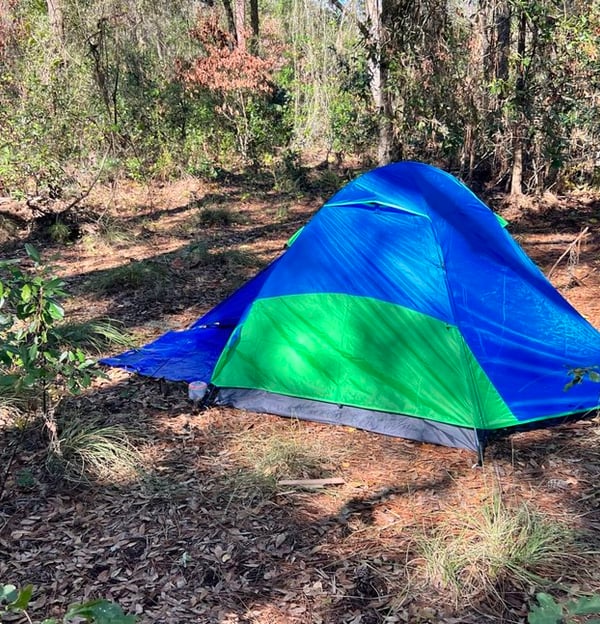

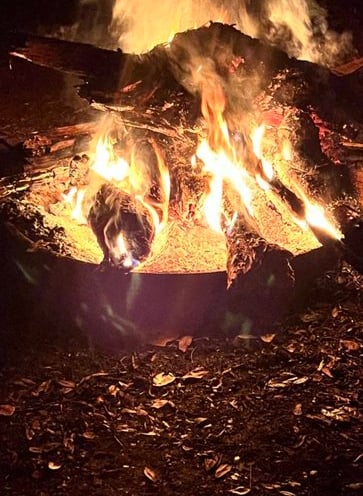

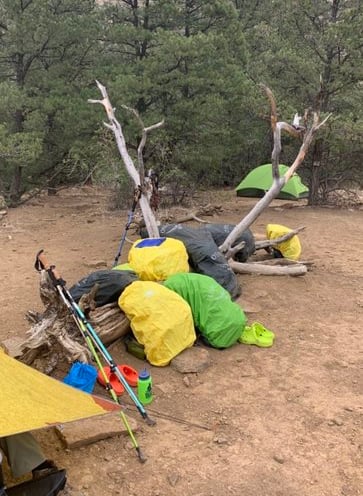

How it all Started-The need for a dad to get some skills.
Growing up I was always an athlete. I played sports year round and never really had the opportunity as a kid or teenager to experience the great outdoors while hiking, backpacking, or camping. My dad worked a lot and we moved a lot and this made it difficult to get established into Boy Scouts or something similar that would provide me with the opportunity, leadership, experiences, and skills needed to be confident in the outdoors. Looking back on it, I know that my dad was trying to put food on the table and clothes on our backs. Making a living is difficult and time consuming. We always had what we needed and a good portion of what we wanted.
Taking the lessons/experiences from when I was a kid, I wanted to make sure that I was available to my family and create the type of childhood that would allow them to experience the great outdoors and to travel. Obviously, this was a daunting task because I did not have any of the necessary skills or knowledge to make this happen. One of the main things that you try to avoid when you are the parent of a child is to not look like a complete idiot in front of them. With this in mind, I knew that I had some work to do. This process (and it is a process) started out by making an assessment of what/where I wanted to be and then I needed to figure out how to get there. So I turned to the resources that were available, Google, YouTube, and various books and articles. As with a lot of things in my life, I jumped in with both feet and started my journey of learning the skills that I would need to create awesome adventures for me and my family.
The Process: Starting with an Assessment.
How does this process start you may be asking yourself? Well that is a great question. So let's start out with an assessment of where you want to go or what you want to do. Think of it as a road map. If you don't know where you are going, how are you going to get there?
As an example, let's say that you are starting out new and have never camped overnight and slept in a tent. This is basically where I started. I had a wife and two young boys that I wanted to get out of the house and we wanted to go on epic adventures and see cool stuff. On its face, this sounds easy, right? Well not if you don't know anything or have any gear. But, what I did (and still do) have is the ability to get out of my comfort zone and learn what I needed to learn and then share these new skills with my wife and sons.
So reading tons of articles, reading online magazines and watching YouTube videos, I started to develop a plan to start this adventure. During my initial assessment, I wanted to obtain reasonably priced gear that would allow us to comfortably and safely go to a local campground, County, State or National Park and camp for a weekend. I wanted the location to have a variety of activities for our family that would include nature trails, swimming, fishing, local wildlife, campfires, to name a few.
The Process: Creating Your Checklist
Based on my assessment of what we wanted to do, I started to develop a checklist (yes I am a big checklist guy ) of what I needed to do. This checklist then served as the foundation for each trip that we wanted to take.
Location:
Where are we going, what do we want to do, what activities are at the location, are there any safety issues, and what do we/you want to accomplish? These are all essential questions when planning a trip or adventure to an unknown location. Beware, this is where I go full “nerd” and start driving everyone crazy. This is possibly the most difficult section and one of the most detailed on what needs to be accomplished. Once you have this figured out, then you can start the other sections with a clear direction of what will be needed.
Here are the essential questions when deciding location/destination:
Budget
What is our budget for travel, accommodations, gear, experiences, food, souvenirs?
Do you need a travel credit card or currency from another country?
If you have a travel or credit card, then can you use points to assist with travel, accommodations, or experiences?
Look at any currency exchange rates that may be in effect.
Interests:
What are each of you interested in?
Discuss with your family members of where they would like to go and what they would like to see.
Family Dynamics:
How old are your children?
Are they old enough to travel freely and walk appropriate distances?
Will you need extra items to make travel essential or more comfortable?
Special accommodations or limitations based on the number of family members, fitness, health?
Travel Duration:
How long is your trip going to be?
Take into account travel days and possible unexpected travel delays.
Where are we going?
Domestic Travel
International Travel
Travel to the Destination: How are we going to get there?
Driving
Flying
Train
Cruise Ship
Travel once at Destination: How are we going to travel once we get to the destination?
Public Transportation- Bus-Train-Subway-Trams
Renting a Vehicle. Do they drive on the same side of the road/car as you are used to?
Traveling home from the destination?
Are we traveling out of the same destination?
Are we flying out of a different airport/train station/cruise terminal?
Travel Documents: What documents or permits do we need?
Do we need Passports? Are they up to date?
TSA Pre-Check/Global Entry Programs
Travel Visas
Any Health Records
Backcounty/Camping/Hiking Permits
Travel Restrictions: Any travel restrictions to any of our destinations?
Safety Issues: Are there any safety issues related to any of our destinations?
Crime/Terrorism
Weather Related Safety Issues
Season and Weather: Consider the time of your travel and the expected and variable weather conditions.
Season and Weather conditions will also be important in reference to gear needed, crowds, and hours of operations.
Accommodations: Where are you going to stay?
Are you going to stay at hotels, vacation rentals, cabins, camping or are you going to move around and will need multiple accommodations?
Languages: Do the people at your destination speak a different language?
Learning about the local languages and knowing a few vital phrases can make travel more fulfilling.
Local Culture: Regardless if you are traveling domestically or internationally, each destination will have various aspects of a different culture.
Learning about the local culture and their customs will take you from being a tourist in that destination to being one of the locals.
Vaccinations and Health: Check and see if any vaccinations or health precautions are necessary for your chosen destination.
Communication: How do you plan on communicating with your travel partners and those back at home if needed?
Many cellular phone plans offer a variety of plans if you are traveling.
Travel radios
Research:
So now you have picked a destination and some experiences by following the above listed essentials for choosing your destination. Now how do you learn about what is out there, how to get there, and is it worth it.
The essential items for your research will include:
Google Searches
Travel Blogs
Travel Websites
YouTube
Friends and Family
Social Media
Shelter/Accommodations:
The first thing that I needed was a Tent. I knew that it would need to be easy to set up, sturdy, big enough for our small family, and reasonably priced. I knew that initially that we would be camping out of our vehicles so the weight and the size of the tent would not be a big deal.
The essential items for your shelter will include:
A tent (with the rain fly, guy lines, and tent stakes)
Extra heavy duty or Tarps
Some paracord
Some extra tent stakes for a variety of ground types.
Sleep System:
I love my sleep. If I don't sleep well, then it's going to be a bad day for EVERYONE. Many people think that because you are sleeping in a tent outdoors that you should not sleep well. There are ways to make sure that you and your loved ones are comfortable and get enough sleep to wake up refreshed the next day and continue on your adventure.
The essential items for developing your sleep system will include:
Sleeping pad
Pillow or two
Sleeping bag or quilt (in the beginning this can be sheets and your favorite covers from your house).
Food and Cooking:
Cooking over the campfire or over a stove in the outdoors is an experience that you and your family will remember. With a little planning, you can have some awesome camping meals with very little effort. From cooking hotdogs and hamburgers over a small charcoal grill, or boiling water for a dehydrated meal, it is important to have a nice warm meal for dinner.
The essential items for food and cooking include:
a heat or energy source of some kind (Campfire, grill, backpacking stove,electric stove)
you will also need a fuel source for this heat source (firewood, charcoal, butane, electricity)
Cookware (Pots, pans, and utensils)
Paper or plastic goods (paper plates, paper towels, spoons, forks, knives, and cups)
Camp Soap and a scrubbie for cleaning any dishes
Food- this can be a variety of fresh food if you are car camping to dehydrated meals, energy bars, and beef jerky.
Cooler-I like to have at least two decent coolers. One is for all day use. Meaning we will be opening and closing this cooler numerous times throughout the day. The second cooler will keep any perishables cold and will only be opened when these items are needed.
Water and beverages- Depending on where you are camping, it may have a water faucet at the campsite or you may have to walk a short distance to get it. I like to bring a few gallon bottles just in case. I will also keep water bottles in the car-. Depending on the site, you may have to purify your water and this can be done with a water filter or purification tablets.
Hydration:
Whether you are at camp or going on a hiking adventure, it is vital to have enough water with you to keep you hydrated. I know that it is easy to get overheated and it is important to make sure you and your family are drinking enough water to stay effectively hydrated. Being dehydrated can cause a lot of problems including headaches, muscle cramps, and getting overheated. Allowing yourself to get dehydrated is a great way to turn in to "grumpy dad" and nobody wants that.
The essential items for hydration include:
Reusable Water Bottles or a hydration bladder
Water filter or purification tablets
Collapsible water container or gallon jugs if you need to transport water a short distance
Drink packets and/or electrolytes
Coffee/Tea
Hot Chocolate
Clothing:
When you are first starting out, the clothes that you have should be good enough to get you through a weekend in the woods. You may have to add a few items in case the weather changes on you. Obviously, this will depend on where you are going, what the weather will be like and what you are planning on doing. Nothing is worse than forgetting your rain jacket or a fleece when the weather takes a turn. My thinking is that if you get caught in a rainstorm you need to have extra clothing or you need to have clothing that can dry quickly. If you're expecting the weather to change on you and the temperatures to fluctuate then you need to have multiple layers that can be added and removed as needed.
Here are a few of the essentials that will be needed:
Moisture-wicking base layers (think underwear and undershirt- these are items right next to your skin)
Insulating layers (lightweight, midweight, heavy weight items like long sleeve shirts, fleece, jackets)
Waterproof/windproof outer layers (this can include a poncho, rain jacket and rain pants- there is even a rain kilt)
Quick Drying hiking pants and shorts- I like to use a variety of running style shorts for this layer
Moisture-wicking socks (I am a huge fan of nice socks- wool synthetic- I admit I have a problem and so does my wife!)
Hat,gloves,beanie- (again this will depend on the weather, but it can get cool at night)
Bandana or Neck Gaiter- (on these I like to have a synthetic wool blend and it has a variety of uses)
Footwear:
Along with great socks, I am very particular about my footwear and making sure that my feet are well taken care of. Nothing is worse than getting a new pair of boots or shoes and using them without breaking them in. Blisters are a great way to ruin your trip and your experience. Having said that, footwear is going to depend on the type of walking/hiking that you are going to do. Are you going to be walking multiple miles, what is the surface you are going to be walking on, is it going to be wet, rainy, snowy, or muddy? These are all considerations that have to be made. Personally, I have a pair of heavy duty hiking boots (for multi-day heavy pack days), a pair of mid weight boots that work great on trips and shorter hikes, and trail runners that are for lighter/faster activities. Don't forget a comfy pair of Crocs or slides for the campsite and to go to the bathhouse in the middle of the night.
Here are a few of the essentials that will be needed:
Hiking Boots/Trail Runners (again depending on what your doing)
Moisture-wicking and cushioned socks
Gaiters if hiking in muddy, snowy, or rocky locations
Camp Shoes-I like to use Crocs or something similar because they have a closed toe, can get wet, and are easy to clean.
Navigation/ Activity Guides:
This section was most likely explored earlier when you were conducting research on the place you are going and what activities are available. I like to save a lot of this information on my phone so that I always have it with me. I will start a notes page and add the information into it. This also helps if you are traveling with others , you can just text or email them the research you have conducted. In terms of maps and field/activity guides , I will print some of this information out especially if it’s something I need to make notes on. I also like to check with the visitors center of where I am going and grab all of the information I might need and hopefully learn about some other adventures that weren’t previously available or known. This keeps me from bringing a lot of papers with me especially if room is tight.
The essentials in the navigation section are:
Guide books/maps/trail guides/activity guides. These can be printed or digital.
An old school compass as a backup in case your phone dies
Various apps on your phone that might assist.
A whistle
Trail marker tape if needed
Backpack:
So, if you are bringing along many of the above listed items you’re going to need something to carry all that stuff around in. Backpacks can vary in size and in purpose. For example, I have a simple comfortable travel backpack that meets a variety of my needs whether I am flying domestically or internationally or going on a road trip or going with my kids to summer camp.
I also have a 65-liter backpacking backpack which I utilize for overnight camping or multi-day treks into the backcountry. The backpack you choose will depend on the activity you doing and how much gear you need to carry. If your kids are in school, most of them can use their school backpacks to carry what they need for a weekend camping trip.
The essentials in the backpacking section are:
Choose a comfortable and appropriately sized backpack with enough capacity to carry all your gear.
Backpack cover
Backpack liner
Lighting:
So we are moving right along with the fundamental gear that is needed to have a successful adventure. Lighting is an area where families miss out on having a really great experience. I am a huge believer in everyone having their own headlamps. In my opinion, headlamps are one of the greatest inventions ever. Now I say that until each of my family members consistently blinds me while wearing them.
So imagine this, you have gotten to your campsite, set everything up, built a campfire, had dinner and are sitting around enjoying the crackle of the campfire and enjoying each other’s company. You then tell your kids to grab their headlamps because you are going to take them on an epic night hike. Watch as their faces light up because you are going to take them out into the woods at night. Going on night hikes is one of my favorite things to do while camping. The location changes completely at night and you are more likely to see animals that you did not see during the day.
The next aspect of lighting is around your campsite and inside your tent. There are a variety of battery powered lighthearted that will do great for each of these applications. There are a variety of battery powered lanterns that you can hang over your eating area and then put one in the tent. Battery powered Christmas lights are a great way to add light and a festive atmosphere. I like to go with lights that take AA or AAA batteries. These batteries are cheap, easy to find, and can power a variety of light sources. Having a backup flashlight is always a good idea and I usually leave it in my vehicle.
The essentials in the lighting area are:
Headlamps- one for each person and then I usually will have one or two extra.
Lanterns- one or two for the camp area and one for the tent
Christmas lights. These are great for inside the tent and outside the tent.
Flashlights
Cheap solar lanterns are also great for the campsite
Batteries for all of these.
First Aid:
Regardless if you are doing a day hike, a weekend camping, or a multi-day trek into the backcountry it is necessary to always have a first aid kit with you. I like to carry my first aid kit in a small red dry bag. I do this so it is easily recognizable by everyone in my group and those that I am camping or hiking with know exactly where my first aid kit is located. Having a good basic first aid kit will allow you to take away or add various items that you may not need on every adventure if you have an accident, prone kids or family members. You know the value of having a first aid kit with you at all times. The size, quantity, and contents of your first aid kit will depend on how many people are with you, how long you’ll be out, and the type of trek you are completing.
The essentials in the first aid kit section are:
A variety of Band-Aids and bandages
Sterile gauze pads
Adhesive tape
Alcohol wipes
Antibacterial wipes and ointment
Burn cream
Ace style bandage
Hand sanitizer
Pain relievers
Tweezers, Scissors, Safety pins
Moleskin, blister pads and Leuko tape
Small safety blanket
More advanced add-ons include:
Ant-diarrhea medication
Blood stopper gauze
Israeli bandage
Tourniquet
Junk Drawer:
This section is aptly named because it comprises many different items that have a variety of purposes. I keep my junk drawer in an orange dry bag. The junk drawer is similar to your first aid kit, because you will keep several fundamental items in it at all times, but then you will add some specialty add-on items as needed, depending on your adventure.
The essential items in your drunk drawer include:
Small-pocketknife or multi-tool
Whistle
Duct tape
Zip ties
Lighter
Insect repellant/sunscreen
Wipes
Toilet/Tissuepaper and trowel for Leave No Trace practice
CampSudsSoap
Work gloves
25-50’ paracord
Floppy hat
Sewing kit
Personal Items:
These items will depend on each person on your adventure. It could be a special drink or a particular snack that you like to have on trail (think gummy bears). These will of course depend on your trip and what you feel like you need.
The essential Personal Items include:
Identification, permits, and credit cards/cash
Map and itinerary left with someone you trust
Personal hygiene items (toothbrush, toothpaste, biodegradable soap)
Deodorant (if you are car camping if you’re in the backcountry try stinking a little….. or a lot.)
Towels
Shower shoes
Sunglasses
Watch
Headphones
Books or a journal
Cell phone or camera
Creature Comforts:
Whether I am car camping, carrying everything on my back, or something in between there are items that I will take with me to ensure my comfort. Just because you are outdoors, does not mean that you should not be comfortable and you should not be having a good night's sleep. Now, if I am carrying everything on my back, these will be limited to several items, but in the car you can bring some extra stuff just to make sure you’re comfortable and plan for numerous exigent circumstances. Some of these are more extravagant than others.
The essentials in creature comforts include:
Camping chairs
Backpacking chair
Battery/electric fans
Phone charger/ battery pack for cellphone
Coffee/ hot chocolate/ tea
Fishing poles and tackle box
Pop up tent
Heavy duty sleeping pad or air mattress
Heavy duty/ comfortable pillows
Electric lights
Portable air conditioning ( don’t judge the south is hot and humid during the summer)
Extension cords
Surge protector
Large camping stove
Plastic portable tables
Bicycles
Scooters
Glow sticks
Sports equipment: frisbee, football, soccer ball,
Tent organizers
Large heavy duty Tarps
S’more sticks
Whew! That is a lot of stuff. This is just an overview. I will start to go into greater detail of all of the above listed sections in future blog posts. Remember this is a process. It is also a process for me. I’m gonna stick with it and I will promise to provide you with real authentic reviews and travel experiences. I challenge you to start looking at your skills and work on them. It is possible to do these things, you just have to take the first step. You can do it! We have a generation to train on how to live outside of a phone, video games, and social media. It all starts here.
Remember……Is everybody ready?……Trek On!
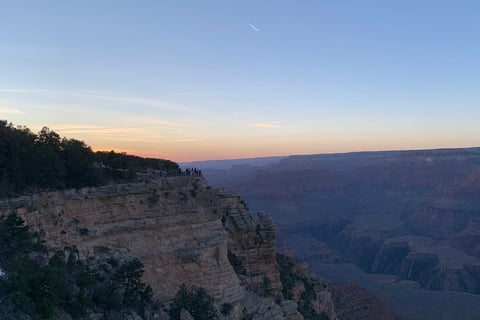

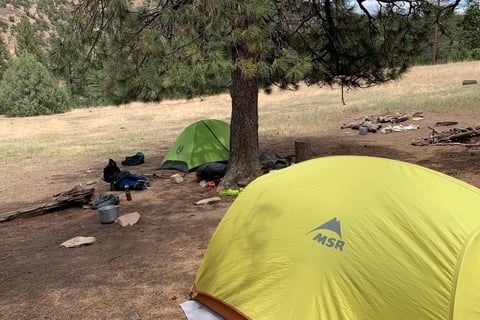

The Process for Creating the Ultimate Family Camping, Hiking, Backpacking, Travel Checklist
Creating the Ultimate Checklist for your Family.
